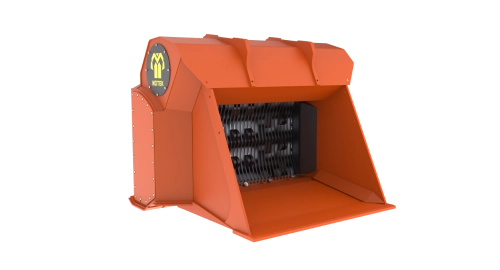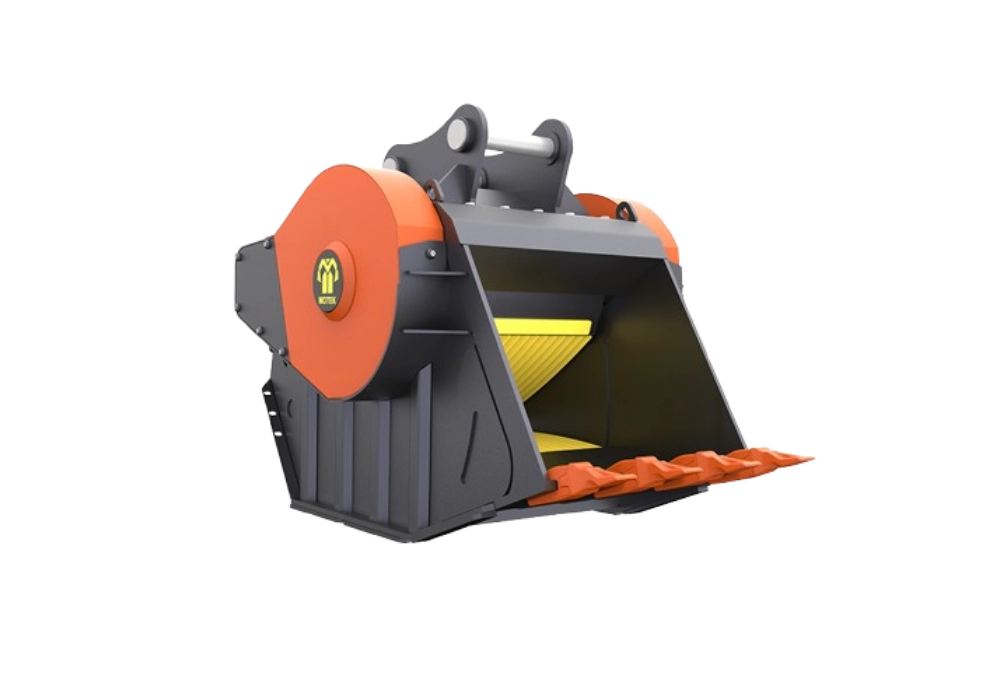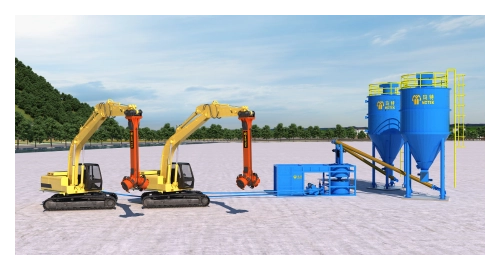Crusher Bucket: the invisible guardian of the circular economy
Release time: 2025-04-11

Amid the roar of the construction site, a construction machine equipped with special accessories is converting concrete ruins into uniform aggregates. This seemingly ordinary equipment is the key equipment to promote the development of the circular economy – crusher buckets. Today, when the concept of sustainable development is deeply rooted in people’s hearts, this mechanical device with both destructive and creative functions is setting off a silent green revolution around the world. From the Tokyo Bay reclamation project to the construction of Dubai Palm Island, from the urban renewal of Berlin to the renovation of Shanghai’s old city, excavator crusher bucket, with its unique working method, converts construction waste into new resources, opening up an innovative path for the sustainable development of human society.
The rebirth of construction waste
The large amount of construction waste generated by modern urban construction, the traditional treatment method not only occupies land resources, but also causes serious environmental burden. Crusher bucket attachment is designed to be quickly installed on construction machinery such as excavators to achieve on-site crushing operations. The engineering team uses the bucket crushers to process the demolished concrete structure on site, converting the construction waste into 0-30mm recycled aggregates, which are directly used for backfilling the foundation of new buildings, so that the comprehensive utilization rate of construction waste in the project reaches 92%, far exceeding the industry average.
Research by the Technical University of Munich in Germany shows that the compressive strength of professionally treated recycled aggregates can reach 85% of natural aggregates, while the carbon emissions are only 1/3 of the traditional treatment methods. In the construction of Beijing Daxing International Airport, more than 600,000 tons of construction waste were recycled through hydraulic crusher bucket, saving natural stone mining equivalent to quarries with an area of 30 standard football fields.
Multiplier effect of environmental benefits
The environmental benefits brought by the crushing bucket present a multi-dimensional superposition effect. The dust pollution and tail gas emissions generated by traditional construction waste transportation can be fundamentally solved under the on-site treatment mode. Monitoring data from the Shanghai Academy of Environmental Sciences show that the use of mobile crushing solutions can reduce PM2.5 emissions by 78% and nitrogen oxide emissions by 65%. In the construction of the Tokyo Olympic venues, the use of crushing buckets reduced the number of construction waste transportation vehicles by 90%, significantly alleviating urban traffic pressure.
In the dimension of carbon emission reduction, the circular economy model created by the best crusher bucket produces a significant carbon sink effect. Every ton of recycled aggregate used can reduce 0.8 tons of carbon dioxide emissions and save 1.5 tons of primary mineral mining. Construction projects using the crushing bucket system have a 42% lower carbon footprint throughout the entire cycle than traditional methods. This emission reduction effect is particularly prominent in tropical rainforest protection areas. A certain infrastructure project in Congo used recycled materials through crushing buckets to avoid damage to local virgin forests.
Today, as the goal of carbon neutrality forces the industry to transform, the digger crusher bucket has evolved from a simple engineering machinery to the infrastructure of the circular economy. This transformation is not only reflected in the improvement of technical parameters, but also in the innovation of environmental protection concepts. When the crushing jaws collide with concrete, it is not only the physical form of construction waste that changes, but also the redefinition of the relationship between humans and nature. In the future development of urban mines, the crushing bucket will continue to play the role of a resource converter, transforming the abandoned yesterday into a sustainable tomorrow.








